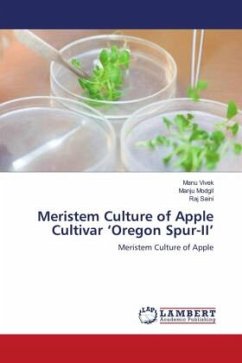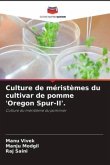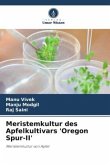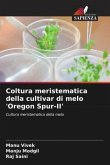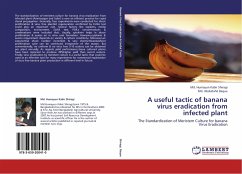An attempt was made to eliminate ACLSV, ApMV, ASGV and ASPV from apple cultivar 'Oregon Spur-II'. During establishment of explants, highest survival percentage (62.35%) and proliferation (30.68%) was recorded during summer season, due to less browning and contamination. However, size of meristems and position of buds from where meristems were excised also influenced their survival. The meristems of size 0.6 - 0.7 mm were found to be the most appropriate for maximum establishment i.e., 36.36 %. Meristems excised from buds positioned on distil portions of actively growing shoots showed better results. MS medium supplemented with BA (1.0 mg/l), IBA (0.05 mg/l) and GA3 (0.1 mg/l) resulted in 56.62% establishment of explants, while maximum number of meristems proliferated with low BA (0.5 mg/l), IBA(0.08mg/l) and same GA3 concentration. Two to four fold multiplication was observed. Virus indexing of shoots raised from different sizes of meristems was carried out and found that 0.3-0.6mm size was able to eliminate ACLSV, ApMV, ASGV and ASPV.
Bitte wählen Sie Ihr Anliegen aus.
Rechnungen
Retourenschein anfordern
Bestellstatus
Storno

